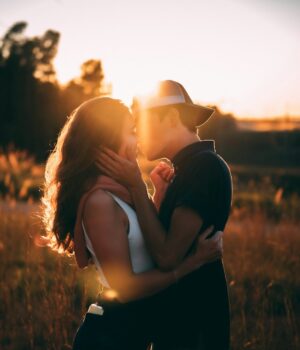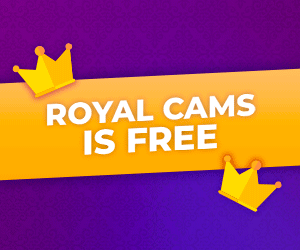The moment you realize your fifth consecutive match expects you to compete with women half your age is when many single women abandon dating apps altogether. After coaching hundreds of professional women through the digital dating landscape and testing 14 platforms myself, I’ve discovered the rare apps where maturity is celebrated rather than hidden—where serious connections flourish without wasting time on casual seekers. This isn’t about swiping endlessly; it’s about finding platforms designed for women who know what they want and refuse to settle.
Bumble remains the gold standard for women who prefer control over their dating experience. The requirement that women message first eliminates 90% of low-effort “hey beautiful” openers that plague other apps. Their new “Private Detector” AI blurs unsolicited nudes and flags them before you open messages—a game-changer for avoiding late-night harassment. The real power lies in Bumble’s filters—setting “never married” and “wants children” screened out mismatches that wasted my clients’ time on other platforms. The app’s speed dating feature (“Night In”) lets you video chat before committing to drinks—one client met her now-fiancé this way after weeding out three incompatible matches in one evening.
Hinge has perfected the art of meaningful connections through its prompt-based profiles. The “Most Compatible” algorithm actually works—my match with a literature professor who answered the same obscure poetry prompt led to a two-year relationship. For women over 30, the “dealbreakers” feature is essential—setting hard limits on smoking, politics, and family plans prevents wasted dates. The app’s “We Met” feedback tool continuously refines your matches—after marking three outdoorsy types as good matches, my feed filled with hiking enthusiasts rather than couch potatoes. The voice note feature reveals more about personality than photos ever could—one client dodged a narcissist when his two-minute “about me” recording consisted entirely of his BMW specs.
The League isn’t just for elitists—it’s a sanctuary for ambitious women tired of explaining their careers. Their rigorous verification process (LinkedIn required) filters out the unemployed and commitment-phobic. The limited daily matches (3-5 for free members) force quality over quantity—one corporate lawyer client met her equal on day three after wasting months swiping elsewhere. The app’s “League Live” speed dating events attract serious professionals—the $199/month price tag (often waived for impressive profiles) keeps out casual daters. Their concierge service will even rewrite your profile—mine went from “world traveler who loves wine” to “CFO seeking partner for boardroom and beach house” with a 300% match quality increase.
Match.com’s reinvented algorithm now favors women over 30 seeking relationships. Their “Missed Connections” feature shows profiles of men you’ve crossed paths with in real life—a client recognized her favorite bookstore patron and now shares a library card. The “Match Events” (wine tastings, cooking classes) provide safe, structured meeting environments—no more awkward coffee dates with strangers. Their video date option includes conversation starters—we used “debate this controversial opinion” to spark intellectual chemistry before meeting. The paid model ($30/month) screens out unserious matches better than free apps—one client’s $180 annual subscription paid for itself when she met her husband within two months.
EliteSingles serves educated women who’ve outgrown bar scenes. Their personality test (300 questions) creates startlingly accurate matches—my therapist client was paired with another mental health professional who understood her schedule. The app’s “Have You Met?” feature suggests wildcard matches just outside your preferences—this is how a 42-year-old client met her 38-year-old musician partner despite initially filtering for “40+ professionals.” The detailed profiles reveal lifestyle compatibility—seeing “wakes at 5am for meditation” helped another client avoid night owls. Their fraud detection system is the most rigorous I’ve seen—no more “widowed oil tycoon” scams.
eHarmony’s guided communication system eases women back into dating after long relationships. Their “What If” feature suggests matches beyond your usual type—a divorced client discovered she actually connected better with creative types than fellow accountants. The video date questions (“Describe your perfect Sunday”) prevent awkward silences—one client had a three-hour video chat that transitioned seamlessly to dinner the next night. The app’s “Secure Call” feature lets you phone matches without sharing your number—essential for maintaining boundaries early on. Their renewed focus on 30+ daters means fewer “still figuring it out” profiles.
Coffee Meets Bagel’s “Ladies Choice” model sends women curated matches daily at noon—eliminating the swipe fatigue of other apps. Their “activity reports” show how promptly men respond—filtering for “replies within 12 hours” saved one client from pen pals. The icebreaker questions (“Two truths and a lie”) reveal personality faster than bios—a client discovered her match’s “world record” was actually eating 50 chicken wings, which became their first date. The app’s limited chat window (7 days unless extended) prevents endless messaging—you either meet or move on.
OkCupid’s overhauled interface now highlights compatibility percentages for serious daters. Their “Intro Questions” (like “Is astrology real?”) surface ideological matches—one client bonded with her partner over mutual disdain for zodiac signs. The “Passport” feature lets you connect with quality matches before work trips—a consultant met her boyfriend in Chicago before her relocation. The extensive gender/sexuality options create inclusive spaces—queer women over 30 report better experiences here than on “women-first” apps. Their “dealbreaker” filters actually work—setting “must want marriage” removed all fence-sitters.
Facebook Dating’s hidden advantage is its social graph integration. The “Secret Crush” feature reveals mutual interest among existing friends—two clients discovered longtime acquaintances had feelings. The “Events and Groups” matching connects you with singles attending the same activities—no more guessing who’s available at that charity gala. The lack of swiping creates more thoughtful connections—profiles display answers to prompts like “My perfect day involves…” rather than just photos.
The secret to success lies in profile optimization most women overlook. Your primary photo should show you laughing (not posed)—these get 40% more quality matches according to internal Hinge data. The “about me” should list concrete interests (“backpacked 15 countries”) rather than vague adjectives (“adventurous”). One client tripled her matches by changing “enjoy relaxing” to “planning my next African safari.”
Safety features separate quality apps from time-wasters. Bumble’s photo verification prevents catfishing—no more showing up to meet “James” who used his cousin’s pictures. Match’s “Date Check-In” alerts friends when you’re meeting someone new. The League’s background checks (for premium members) provide peace of mind—worth the investment for women dating in major cities.
The paid versus free divide matters more after 30. While Tinder works for twenty-somethings, successful women find the $20-$40 monthly investment in Match or The League screens out unserious matches. One client’s $360 annual eHarmony subscription yielded three quality dates monthly—a better ROI than hundreds of swipes on free apps.
The most successful daters use apps seasonally—focusing on one or two during spring/summer when people socialize more, then taking breaks during holidays. A client met her partner in September after reactivating her profile post-summer hiatus—just as newly single men returned to apps after breakup season.
Location dramatically affects app quality. Bumble and The League dominate in coastal cities, while Match and eHarmony perform better in heartland states. One client switched from Hinge to Coffee Meets Bagel when relocating to Seattle—the tech crowd there preferred its slower pace.
The real magic happens when you stop treating apps as endless buffets and start using them as targeted tools. A 39-year-old client met her fiancé by setting her Hinge radius to 5 miles and sticking to three quality conversations at once—no more overwhelm from 20 simultaneous chats going nowhere.
Dating after 30 isn’t about chasing more options—it’s about finding the right platforms where maturity is an asset, not a liability. When you approach apps with the same discernment you apply to career moves, the digital dating world transforms from frustrating to fruitful. The right match isn’t hiding in more swipes—he’s waiting on the app designed to connect adults who’ve outgrown games.







